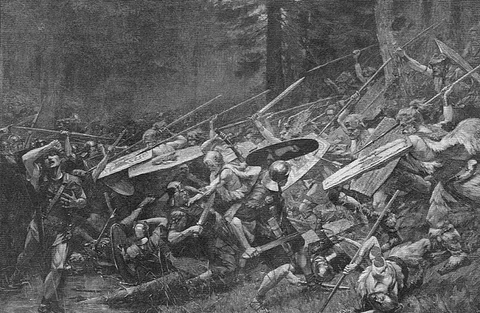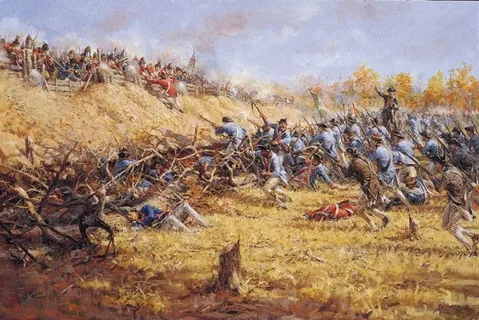The siege and battle of Al-Taa’ef in 8 Hijri (630 CE) was a significant military campaign led by the Prophet Muhammad following the Muslim conquest of Mecca, during the early period of Islamic expansion. It was part of a series of confrontations with the people of Ta’if, a strongly fortified city inhabited mainly by the Thaqif tribe, who had resisted Islamic rule. The battle lasted for about 25 to 30 days but unlike earlier battles such as Hunayn, the Muslims were unable to penetrate Ta’if’s strong defenses. This campaign highlights the strategic and diplomatic aspects of early Islamic military history, along with the challenges of overcoming a well-protected fortress city.
Background of the Battle of Al-Taa’ef
After the decisive Muslim victory at the Battle of Hunayn, many of the enemy forces, primarily from the Thaqif tribe, fled and took refuge in Ta’if, their heavily fortified hometown. Ta’if was located in a mountainous region with high walls and strategically placed watchtowers, making it difficult for any external forces to easily breach the city. The inhabitants of Ta’if prepared for the siege by stockpiling food and reinforcing the city defenses to withstand a prolonged attack.
The Prophet Muhammad moved swiftly to besiege Ta’if immediately after the victory at Hunayn, establishing his camp nearby and initiating the siege. The aim was to end the continuous hostility from the Thaqif tribe and consolidate Muslim control over the region surrounding Mecca.
The Siege and Military Tactics

The siege lasted around 25 to 30 days with continuous fighting. The defenders of Ta’if used their superior archery skills to great effect, showering the Muslim forces with arrows, which caused significant casualties to the besieging army. The Muslims initially camped close to the city, within range of the arrows, prompting the Prophet to relocate his army to a safer distance just beyond the reach of enemy fire.
One notable military innovation during the siege was the use of catapults (a type of siege artillery) under the guidance of Salman Al-Muhammadi. This was among the earliest recorded uses of such siege engines in Islamic military history. The catapults were used to hurl stones at the city walls and fortifications, causing damage and attempting to break the defenders’ stronghold. Despite these efforts, the walls of Ta’if proved resilient, and the siege was unable to force a quick surrender.
Several attempts to breach the city gates were made but were repelled by the defenders who dropped hot irons and stones from the city walls, making entry costly and difficult. The skill and determination of the defenders prolonged the siege, and the Muslims could not fully encircle the city due to the natural terrain.
Read more: The battle of Umrat Al-Qadaa’ (7 Hijri)
Diplomatic Efforts and Outcome
The siege and battle did not end in an outright military victory. After about a month, based on council advice and a prophetic vision, the siege was lifted, and the Muslim forces withdrew. Before retreating, the Prophet Muhammad threatened to destroy the extensive vineyards and agricultural resources around Ta’if, which was an important aspect of the local economy.
In an effort to weaken the city’s resistance, Muhammad also made efforts to win over influential leaders from the surrounding tribes. He successfully convinced Malik ibn Awf, the chief of the Banu Hawazan tribe allied with Ta’if, to accept Islam by promising the return of his family and property and ensuring their protection. Malik’s conversion and support helped the Muslims in blockading the city and made it harder for the defenders to sustain themselves.
Additionally, Prophet Muhammad offered freedom to any slaves who defected to the Muslims during the siege, a move that had a small but notable impact on the morale inside Ta’if as some slaves chose to leave the city.
Strategic Importance and Legacy
Though the siege of Ta’if did not end with immediate Muslim control, it marked a turning point. The city’s defenses were never breached during this siege, but the withdrawal did not imply a defeat. It demonstrated Muhammad’s strategic flexibility in warfare—he avoided unnecessary loss by lifting the siege when conditions were unfavorable.
The campaign also sent a message to other tribes about the growing power of the Islamic state. The eventual conversion of Malik ibn Awf represented the increasing acceptance of Islam among formerly hostile groups. Ta’if itself surrendered peacefully about two years later during the caliphate of Abu Bakr, establishing Muslim authority without a further major conflict.
The battle of Al-Taa’ef was significant in the consolidation of Muslim control over the Arabian Peninsula following the conquest of Mecca and shaped the diplomacy and military tactics used in future campaigns.
Read about: The battle of Bani Lehyan (6 Hijri)
FAQs
Why was the city of Ta'if so difficult to conquer?
Ta'if was located in a mountainous area with strong fortifications, high walls, and well-defended watchtowers. The inhabitants were skilled archers, and the natural terrain made it difficult to fully encircle the city, prolonging the siege significantly.
How long did the siege of Ta'if last?
The siege lasted for about 25 to 30 days, during which the Muslim forces attempted multiple assaults but ultimately could not breach the city's defenses.
What weapons or tactics were used by the Muslims during the siege?
The Muslims used catapults to hurl stones at the city walls, which was an early example of siege artillery in Islamic military history. They also attempted to break in through the gates but were repelled by defenders dropping hot irons and stones.
Did the Muslims win the Battle of Al-Taa'ef?
The siege did not end in an immediate military victory, and the Muslims eventually lifted the siege. However, it was strategically successful as it weakened the defenders and paved the way for future peaceful acceptance of Islam by Ta'if.
What was the role of Malik ibn Awf during the siege?
Malik ibn Awf, a tribal chief allied with Ta'if, was persuaded to convert to Islam during the siege. His conversion helped the Muslims in blockading the city, cutting off resources, and undermining the defenders’ morale.
Conclusion
The Battle of Al-Taa’ef in 8 Hijri was a complex and prolonged siege that reflected both the military challenges and diplomatic efforts of the early Islamic period. Despite not achieving an immediate military victory, the campaign illustrated the skill of the Muslim forces in siege warfare, innovative use of weapons like catapults, and pragmatic decision-making by the Prophet Muhammad. The siege weakened the Thaqif tribe and laid the groundwork for the eventual peaceful submission of the city and surrounding tribes. This battle underscored the growing influence of Islam and the careful balance of force and diplomacy in expanding the young Muslim state.

